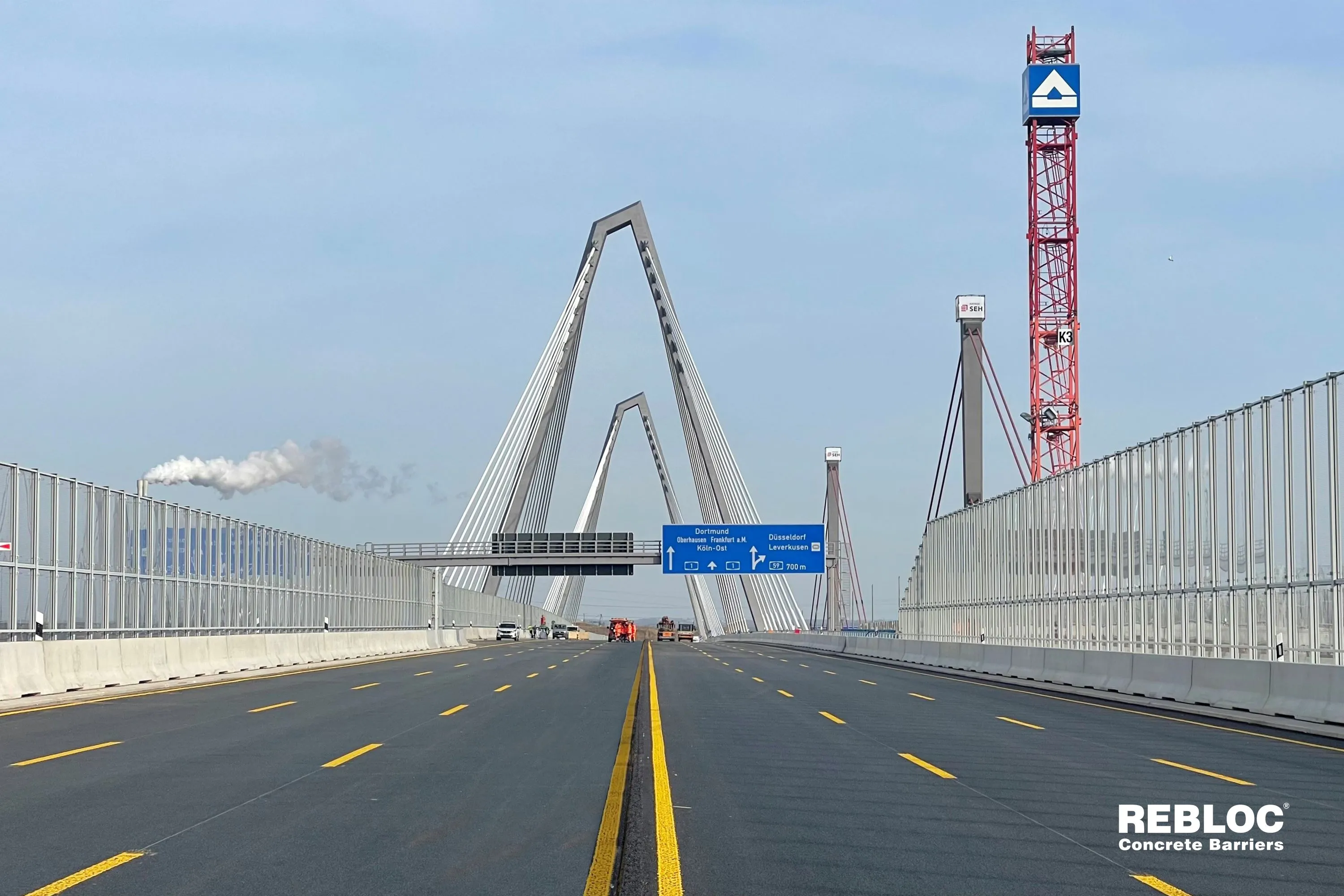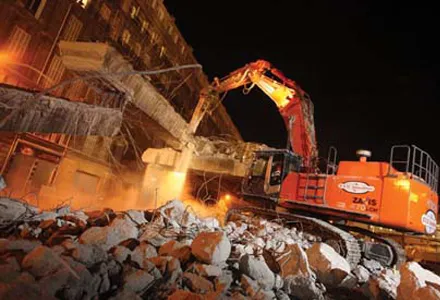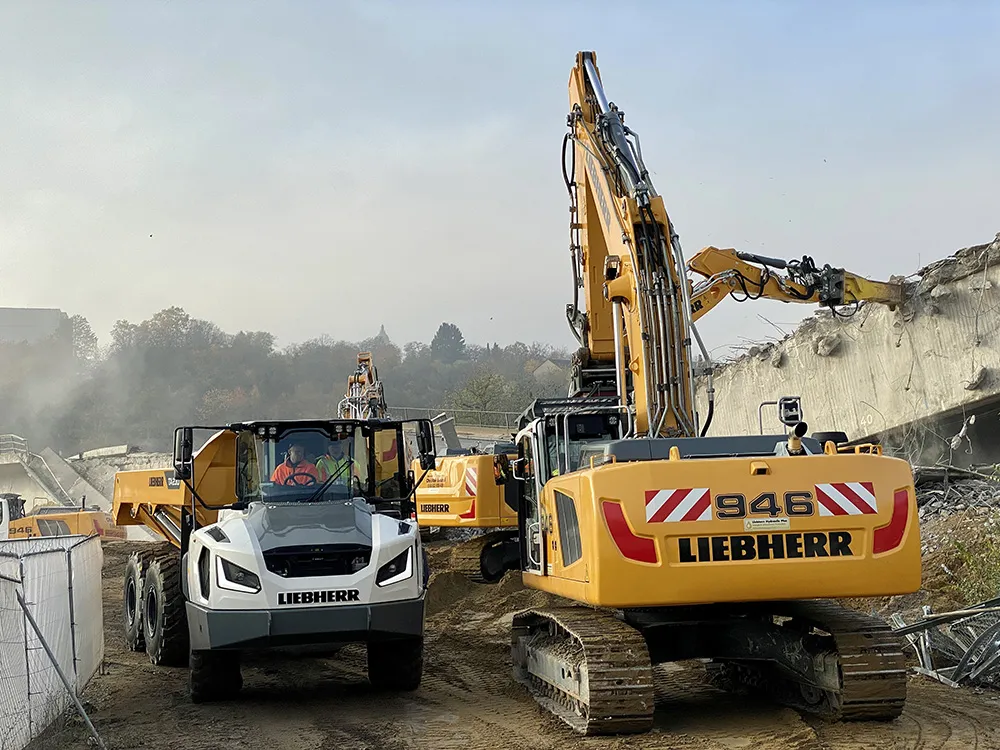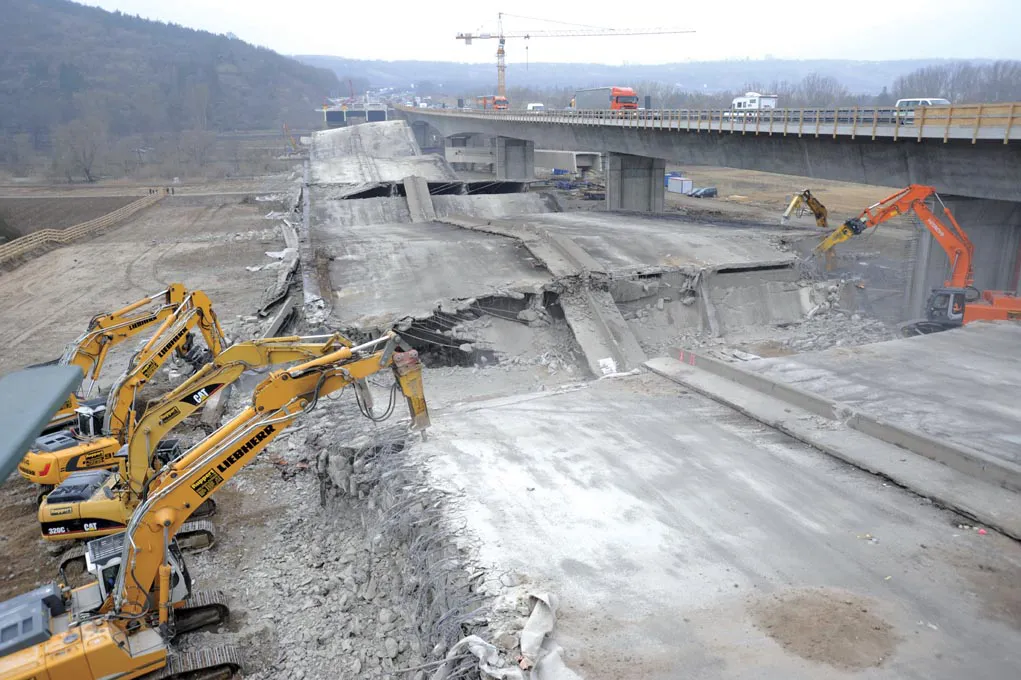November 17, 2014
It was a 24-hour job to demolish the bridge called On Leiterchen that crossed over the A43 in the industrial Ruhr area of the German state of North Rhine-Westphalia.
Traffic was stopped in both directions between junctions Recklinghausen-Hochlarmark and Recklinghause-Herten.
Before the serious work of nibbling away at the concrete structure could start, a 50cm layer of sand was spread across the entire motorway to protect the pavement from excavator machine tracks and falling concrete. The bridge eventually jack-knifed in on itself.
Equipment used included Cat 336D and E excavators, three Hitachi ZX350 and one ZX470 excavators and two Mercedes Benz Arocs dump trucks.
Traffic was stopped in both directions between junctions Recklinghausen-Hochlarmark and Recklinghause-Herten.
Before the serious work of nibbling away at the concrete structure could start, a 50cm layer of sand was spread across the entire motorway to protect the pavement from excavator machine tracks and falling concrete. The bridge eventually jack-knifed in on itself.
Equipment used included Cat 336D and E excavators, three Hitachi ZX350 and one ZX470 excavators and two Mercedes Benz Arocs dump trucks.









